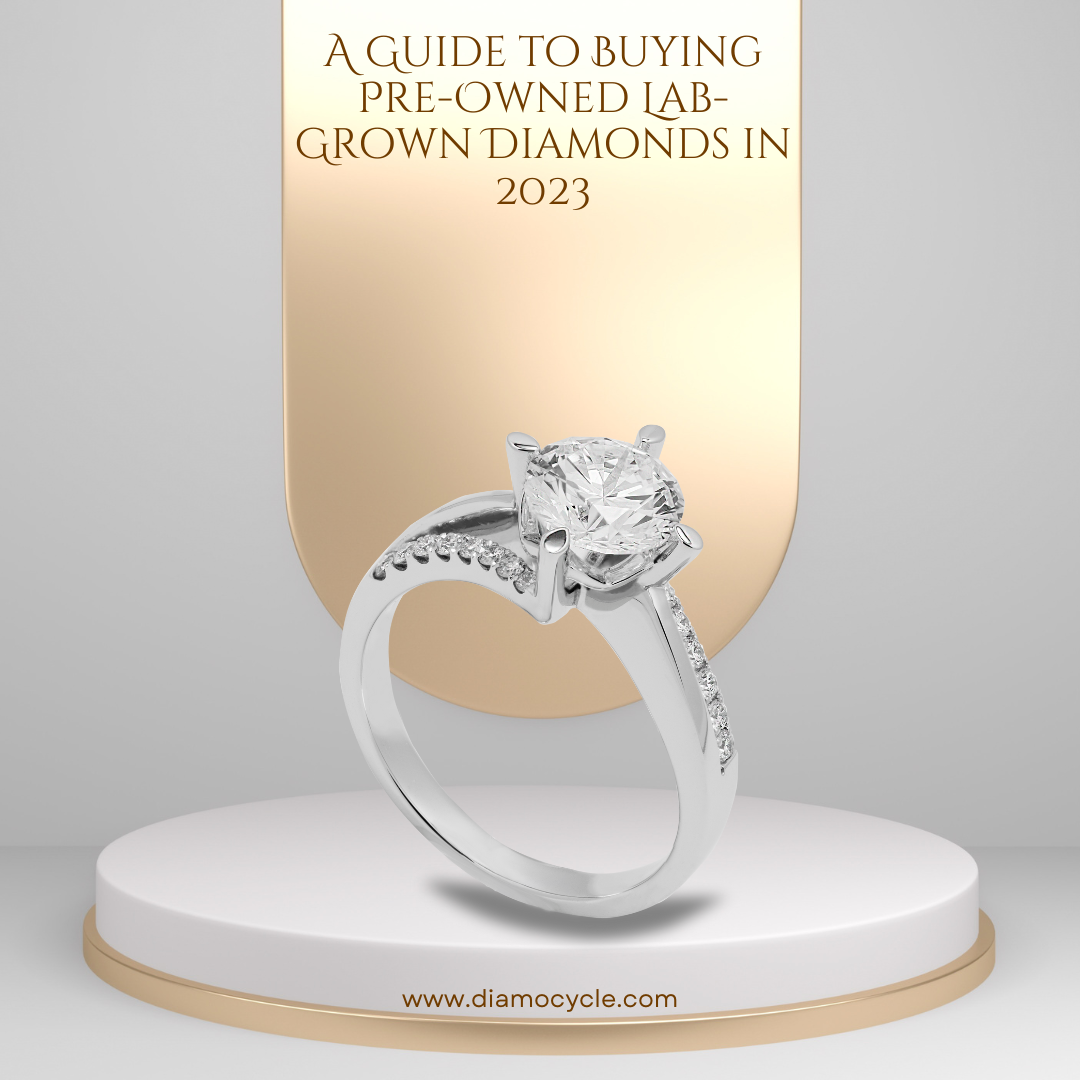Your cart is currently empty!
A Guide to Buying Pre-Owned Lab-Grown Diamonds in 2023
Across our publication, the Diamocycle Dispatch, we unlock all of the mysteries of the diamond world. We are particularly excited to explain pre-owned lab-grown diamonds and everything you need to know to make an informed purchasing decision regarding lab-grown diamonds. Lab-grown diamonds are fast becoming an essential product in the diamond world. They are both sustainable and affordable. Pre-owned lab-grown diamonds are starting to enter the marketplace and are an exciting value for consumers shopping for a deal. Our legacy in diamonds began in 1857, over 150 years ago.
History of Lab-Grown Diamonds
Lab-grown diamonds were first produced in the 1950s using a process called high pressure, high temperature (HPHT). In the 1980s, a new method known as chemical vapor deposition (CVD) was developed, which allowed for the production of diamonds in a laboratory setting at a much lower cost and with more control over the size and quality of the diamonds produced. Today, lab-grown diamonds are made using HPHT and CVD methods and have become a popular alternative to mined diamonds due to their lower cost and environmentally friendly production process.
Who Grades Lab-Grown Diamonds
Lab-grown diamonds are graded by gemological institutes, independent organizations that evaluate the quality of diamonds and other precious gemstones. Some of the well-known gemological institutes that grade lab-grown diamonds include the Gemological Institute of America (GIA), the International Gemological Institute (IGI), and the American Gem Society (AGS). These institutes use the same criteria for grading lab-grown diamonds for mined diamonds, including carat weight, color, clarity, and cut. The grades assigned by these institutes help consumers make informed purchasing decisions by providing objective, impartial assessments of the quality of the diamond.
How do I Buy a Lab-Grown Diamond
If you’re interested in buying a lab-grown diamond, here are some steps you can follow:
- Determine your budget: Lab-grown diamonds tend to be less expensive than mined diamonds, but the price can still vary depending on the size, quality, and certification of the diamond.
- Research lab-grown diamond vendors: Look for reputable vendors selling lab-grown diamonds. You can also check online reviews and ask for recommendations from friends or family.
- Choose the proper certification: Make sure the diamond you’re interested in purchasing comes with a certificate from a reputable gemological institute, such as the Gemological Institute of America (GIA), the International Gemological Institute (IGI), or the American Gem Society (AGS).
- Consider the 4 Cs: Just like with mined diamonds, you’ll want to pay attention to the 4 Cs of lab-grown diamonds: carat weight, color, clarity, and cut.
- Ask questions: Don’t hesitate to ask the vendor any questions you have about the diamond, including its origin, certification, and any treatments or enhancements that have been performed.
- Make the purchase: Once you’ve found the right lab-grown diamond and vendor, you can purchase. Read the terms and conditions carefully, and consider buying insurance or a warranty to protect your investment.
These steps will help you feel confident in purchasing a lab-grown diamond. In addition, Diamocyle is now accepting lab-grown diamonds for our marketplace, and we are excited to bring you the opportunity to buy pre-owned lab-grown diamonds.
How Much Should I Pay For a Lab-Grown Diamond
The price of a lab-grown diamond depends on several factors, including its size, quality, and certification. However, on average, lab-grown diamonds tend to be 20-40% less expensive than mined diamonds. Here’s a rough guide to help you determine what you should pay for a lab-grown diamond:
- Carat weight: The price per carat will increase as the size of the diamond increases.
- Quality: The diamond’s color, clarity, and cut will impact its price. A high-quality diamond with excellent color, clarity, and cut will be more expensive than one with lower-quality attributes.
- Certification: A diamond with a certificate from a reputable gemological institute, such as the Gemological Institute of America (GIA) or the International Gemological Institute (IGI), will generally be more expensive than one without certification.
As a rough estimate, you can expect to pay between $300 to $5,000 per carat for a lab-grown diamond. However, prices can vary widely depending on the specific factors mentioned above. Therefore, to get an accurate idea of what you should pay for a lab-grown diamond, it’s best to get quotes from several vendors and compare prices.
In conclusion, lab-grown diamonds can be an exciting way to get a sustainably grown diamond at a discount, and pre-owned lab-grown diamonds can be an even better deal. So feel free to submit a listing for sale or shop for pre-owned recycled or lab-grown diamonds on our Diamocycle Marketplace now.

